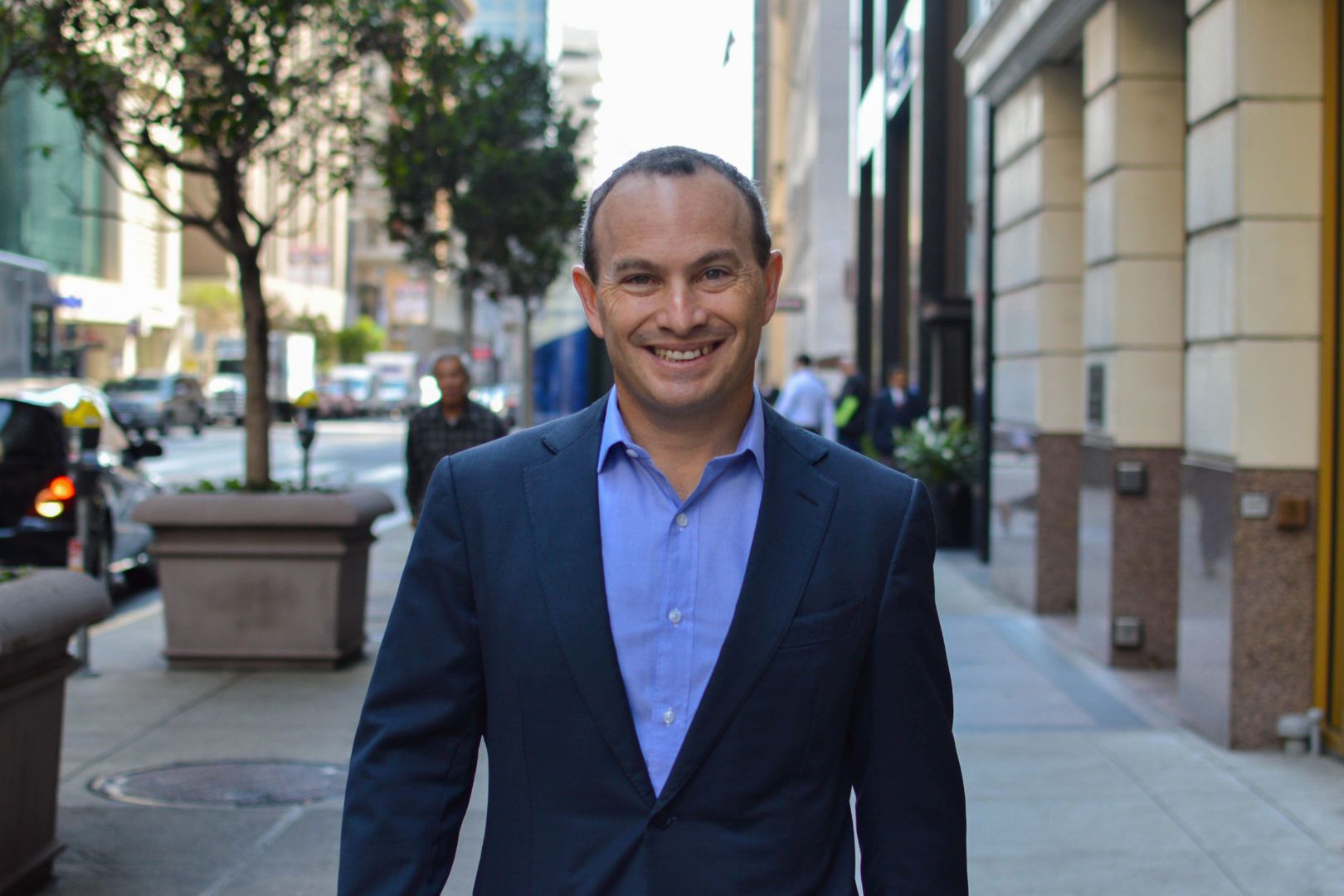 View Winners →
View Winners → 
Almost two years into the pandemic, we are hearing how education has been adversely affected. Some schools shut down because of double-digit decline in enrollment, students dropped out of school because of pandemic-related disruptions, students didn’t show up for virtual classes because they had no internet access. Distance learning underscored inequity in education — students in low-income households suffered the most learning loss.
EducationSuperHighway, a San Francisco-based national nonprofit organization, which successfully closed the K-12 classroom connectivity gap in seven years, just released a report that highlights that after decades of public and private investment in broadband infrastructure, affordability is now the number one cause of the digital divide, despite the widespread availability of low-cost broadband options from internet service providers.
Over 18 million unconnected households (46.9 million people) have access to internet service but cannot afford to connect to even low-cost broadband plans. In 43 states, the broadband affordability gap is the largest portion of the digital divide, making up 58% of the digital divide in states with rural populations that exceed the national average. Previous efforts to provide the resources households need to connect have fallen short. As few as 17% of Americans eligible for federal broadband affordability programs have enrolled due to awareness, trust, and enrollment barriers.
The report further noted that this broadband affordability gap disproportionately impacts low-income, Black, and Latinx communities. Without high-speed internet access at home, families in California can’t send their children to school, work remotely, or access healthcare, job training, the social safety net, or critical government services.
Thursday, Nov. 4, EducationSuperHighway launched its new mission and campaign ‘No Home Let Offline’ to close the digital divide for the households that have access to the internet but can’t afford to connect.

Evan Marwell, founder and CEO of EducationSuperHighway, details via email the organization’s efforts to accomplish their ambitious goal: “We are currently working with Partnership LA and their cohort of 19 schools within the Los Angeles Unified School District. First, we implemented our K-12 Bridge to Broadband program to understand the connectivity status of each of their student households, along with the specific ISPs that can serve them. Now, using the data provided by AT&T and Spectrum, we are supporting Partnership LA staff (admins) and local school staff with building, implementing, and managing a Broadband Adoption Center to support their families through enrollment in connectivity solutions. This includes general awareness marketing (social media, creating flyers, and other awareness materials), as well as deploying a targeted outreach strategy to guide staff through direct calling and texting to families to help sign them up for broadband. Our goal is to expand our partnership throughout the Los Angeles market, including the San Gabriel Valley, once we finish our work with Partnership LA. ”
“Raising awareness of federal broadband and low-cost broadband programs is critical,” Marwell emphasizes. “Many families eligible for federal broadband subsidies are simply not aware that these programs exist or are confused by the multitude of options presented to them. A recent national survey of low- and lower-middle-income households found that only 25% had heard of the Emergency Broadband Benefit program. Historically, marginalized groups are notoriously hard to reach, struggle with language barriers, and are more likely to have experienced challenges accessing other government programs.
“We think that broad outreach alone often only adds to the confusion and should be accompanied by targeted information from trusted sources such as school districts, community health centers, faith leaders, and other community-based organizations. To provide effective leadership, local governments must start with a clear understanding of the problem by collecting household-level data on who is and is not connected. Armed with data and specific goals, they can then develop a comprehensive strategy to close the broadband affordability gap in their communities.”

Funding for EducationSuperHighway’s massive undertaking will come from the federal government as well as philanthropic individuals and organizations.
Marwell discloses, “The federal government is poised to invest $20 billion in the nation’s largest-ever broadband affordability and adoption programs — starting with the Consolidated Appropriations Act of 2021 and continuing with the American Rescue Plan Act and the bipartisan infrastructure bill. Congress will provide over $85 billion in new funding for broadband infrastructure, affordability, and adoption programs. Perhaps most importantly, the Consolidated Appropriations Act of 2021 created the $3.2 billion Emergency Broadband Benefit Program to ensure that all households could afford a home broadband connection. This is ‘the nation’s largest-ever broadband affordability program,’ and the bipartisan infrastructure bill will increase funding for the program by $14.2 billion in order to ensure it can help close the affordability gap for at least the next five years.
“The Emergency Broadband Benefit, to be renamed the Affordable Connectivity Program as part of the bipartisan infrastructure bill, will provide $30 per month to ISPs for any household with an income below 200% of the poverty line. The Emergency Broadband Benefit provides $50 per month to ISPs for eligible households. This amount will be reduced to $30 per month as part of the bipartisan infrastructure bill. This is significantly more than the price of existing affordable connectivity plans from most ISPs and will likely result in ISPs offering home broadband plans at this price that meet the new broadband standard of 100 Mbps download / 20 Mbps upload being established by Congress as part of the bipartisan infrastructure bill. Together, the Emergency Broadband Benefit and higher capacity affordable broadband plans from ISPs will ensure that most households will have sufficient bandwidth to learn, work, and access healthcare and critical services remotely.”
“In addition, the bipartisan infrastructure bill also makes clear that Congress understands the need for proactive efforts to drive broadband adoption.” Marwell says further. “The $2.75 billion Digital Equity Act provides five years of funding for state and local entities to tackle the barriers to broadband adoption. This would be an unprecedented investment in driving broadband adoption and will enable state and local governments, nonprofits, community-based organizations, and the private sector to provide the outreach, training, and enrollment assistance required to reach and connect unconnected households to home broadband services.
“The Infrastructure Investment and Jobs Act includes $2 billion for the Tribal Broadband Connectivity Program. The bill creates a Digital Equity Competitive Grant Program to support broadband adoption, which includes a 5% set-aside to award grants to, or enter into contracts or cooperative agreements with, Indian Tribes, Alaska Native entities, and Native Hawaiian organizations.
“Finally, Congress is paving the way for innovative approaches to driving broadband adoption by making the installation of free Wi-Fi networks in low-income apartment buildings an allowable use of the $42.5 billion of infrastructure funding in the bipartisan infrastructure bill and the $10 billion Capital Projects Fund already enacted in the American Rescue Plan Act.”
Adds Marwell, “We do not yet have individual donors in the Los Angeles and San Gabriel Valley areas, but several foundations and philanthropic organizations have made a $16 million multi-year investment in our mission including: Emerson Collective; Blue Meridian Partners; Ken Griffin, Citadel, and Citadel Securities; the Chan Zuckerberg Initiative; Walton Family Foundation; and Zoom Cares Fund. EducationSuperHighway is fully funded by philanthropy, so all of our programs, and the tools and support we provide are free of charge.”

Today’s launch also marks another milestone in EducationSuperHighway’s efforts to connect all homes to the internet — a wide-ranging partnership with the City of Oakland.
“It is one of our key demonstration programs to show how it’s possible for cities to close the affordability gap in their most unconnected communities,” explains Marwell. “Together with community-based organizations and other key stakeholders, the partnership will deploy free Wi-Fi in low-income apartment buildings and establish a broadband adoption center to help eligible households enroll in the Affordable Connectivity Program. Our goal is to develop playbooks that enable states, cities, school districts, housing authorities, and other trusted institutions of innovative programs to increase broadband adoption at scale across the country.”
Increasing the availability and speed of affordable broadband plans as well as government funding to make internet connection affordable, however, are not enough to close the gap. EducationSuperHighWay’s findings reveal that as few as 17% of Americans who are eligible for broadband benefit programs have enrolled.
“We must now remove the barriers that keep low-income families from adopting high-speed broadband when it is available in their area and fully subsidized,” declares Marwell. “These barriers fall into three categories — awareness, trust, and enrollment challenges. First, most unconnected households are unaware of federal broadband programs and how they can help them get connected. For example, a recent national survey of low- and lower-middle-income households found that only 25% had heard of the Emergency Broadband Benefit program (which provides eligible households with a $50 discount on their monthly internet bill). Second, many unconnected households are also concerned about sharing personal information as part of the sign-up process and are skeptical federal broadband benefits will actually cover the cost of their home broadband connection. Finally, signing up for federal broadband programs can be time-consuming, confusing and requires households to provide details of their income status or other documentation that many cannot easily access.”

Furthermore, success is hinged on people actually enrolling. Older Americans — those who aren’t digital natives — aren’t versed in technology and are intimidated by the application process.
“We agree that making enrollment as straightforward and painless as possible is vital to ensuring high adoption rates,” Marwell concurs. “Many low-income Americans struggle with the cost of long wait times, complex terms and conditions, language barriers, or navigating eligibility and enrollment information. For older Americans and those who rent their homes, concerns about the installation process can also influence the decision to apply.”
School districts and community-based organizations (CBOs) play a vital role, according to Marwell. “They are well-positioned to build awareness and trust for affordable broadband programs and should be critical partners in outreach campaigns to enroll eligible households in federal broadband programs and help them sign-up for low-cost broadband plans. Our Broadband Adoption Center program for states, cities, housing authorities, school districts, and other trusted institutions, provides a blueprint for success. Centers recruit and train outreach staff on calling and texting tools, call scripts, and enrollment processes. Outreach staff then streamline enrollment by walking individuals through the entire sign-up process. EducationSuperHighway works with local and national ISPs throughout the process to facilitate sign-ups. Where ISPs allow, families can be pre-qualified for eligibility and directly enrolled into affordable internet plans by outreach staff.”
Marwell ends by saying, “The pandemic has been the catalyst for unprecedented levels of federal funding, new public-private partnerships, and the emergence of best practices that present an opportunity to close two-thirds of the digital divide. As a result, we now have a historic opportunity to close the broadband affordability gap, which is the largest portion of the digital divide in 43 states and makes up 58% of the digital divide in states with rural populations that exceed the national average. Just like when we closed the K-12 digital divide, we must assemble a broad public-private partnership to seize this historic opportunity.”
The inequities in American society are deep and systemic. And while making internet connection affordable — even free for some households — doesn’t solve the problem, it is a first step in the right direction. In fact, in our digital world, it can be a lifeline.







































































































